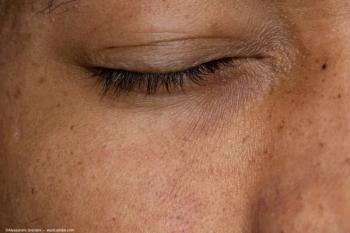
Metabolomic profiling of vitreous humor reveals stage-specific biomarkers in diabetic retinopathy
Key Takeaways
- Metabolomic profiling can identify stage-specific biomarkers of diabetic retinopathy in the vitreous humor, aiding in disease stratification and personalized therapy.
- Distinct metabolic signatures, including lysine, proline, and carnitine, correlate with DR progression, offering potential diagnostic and therapeutic insights.
The authors of a recent study believe in the potential of metabolomic profiling for identifying stage-specific biomarkers of diabetic retinopathy (DR) in the vitreous,1 according to first author John Kim Hiller, MD, PhD, from the Center for Eye Research and Innovative Diagnostics, Department of Ophthalmology, Institute of Clinical Medicine, Faculty of Medicine, Oslo University Hospital, University of Oslo in Norway.
“As researchers strive to untangle the molecular underpinnings of DR progression, the identification of robust biomarkers capable of distinguishing distinct stages of the disease has emerged as a pivotal pursuit.2,3 In this context, the growing field of metabolomics offers a promising avenue, leveraging the dynamic interplay and effects of small molecules to illuminate the metabolic signatures associated with varying stages of DR,"4 Hiller and colleagues commented.
They theorized that because the vitreous humor contains metabolites sourced from both local ocular tissues and systemic circulation,5 these small-molecule chemicals may provide a dynamic reflection of cellular processes and may reveal the biochemical nuances characterizing different stages of DR.6 They said the metabolomic fingerprint present in the vitreous environment may hold the key to unlocking molecular insights crucial for accurate disease stratification, prognosis, and the tailoring of personalized therapeutic interventions.4,6
In this study, the authors collected vitreous samples during therapeutic pars plana vitrectomy from 23 patients with varying health scenarios: without diabetes (control, n=6), with diabetes and without retinopathy (DIA, n=5), nonproliferative DR (NPDR, n=5), and proliferative DR (PDR, n=7). The samples were analyzed using high-performance liquid chromatography coupled with high-resolution mass spectrometry.
Metabolomic results
The analyses of the principal components showed distinct metabolic signatures differentiating the patient groups, according to the investigators.
“The lysine, proline, and arginine levels progressively increased from DIA to NPDR and PDR stages, highlighting their association with disease progression. Methionine and threonine showed notable increases in PDR compared [with] all other groups, while carnitine, a key metabolite in lipid metabolism, exhibited stage-specific increases, peaking in PDR. The detection of systemic and topical drugs, including metformin and tropicamide, in the vitreous further emphasizes altered ocular permeability in DR,” Hiller and colleagues reported.
The insights gained from this study will contribute to an increased understanding of the pathophysiological mechanisms underlying the progression from no DR via NPDR to full-blown PDR. The authors said that identifying the changes in lysine, carnitine, and proline metabolism observed may indicate disease progression and help contribute to the development of innovative diagnostic tools and therapeutic targets, thereby contributing to the enhanced prevention and management of DR and its complications.
They also suggested that future research can validate the present findings in bodily fluids that can be accessed more easily, such as the aqueous humor, tear fluid, or serum, to detect DR early on and explore the protective role of metformin in the ocular environment, particularly in preventing the transition from NPDR to PDR.
The researchers are planning a longitudinal follow-up study that includes aqueous and serum sampling to investigate dynamic changes in the ocular and blood metabolomes during the progression of DR.
References
Hiller JK, Sandås EM, Rootwelt H, et al. Metabolomic biomarkers in vitreous humor: unveiling the molecular landscape of diabetic retinopathy progression. Int J Retina Vitreous. 2025;11(1):58. doi:10.1186/s40942-025-00682-5
Safi H, Safi S, Hafezi-Moghadam A, Ahmadieh H. Early detection of diabetic retinopathy. Surv Ophthalmol. 2018;63(5):601-608. doi:10.1016/j.survophthal.2018.04.003
Vujosevic S, Aldington SJ, Silva P, et al. Screening for diabetic retinopathy: new perspectives and challenges. Lancet Diabetes Endocrinol. 2020;8(4):337-347. doi:10.1016/S2213-8587(19)30411-5
Laíns I, Gantner M, Murinello S, et al. Metabolomics in the study of retinal health and disease. Prog Retin Eye Res. 2019;69:57-79. doi:10.1016/j.preteyeres.2018.11.002
Boulagnon C, Garnotel R, Fornes P, Gillery P. Post-mortem biochemistry of vitreous humor and glucose metabolism: an update. Clin Chem Lab Med. 2011;49(8):1265-1270. doi:10.1515/CCLM.2011.638
Midena E, Frizziero L, Midena G, Pilotto E. Intraocular fluid biomarkers (liquid biopsy) in human diabetic retinopathy. Graefes Arch Clin Exp Ophthalmol. 2021; 259(12):3549-3560. doi:10.1007/s00417-021-05285-y
Newsletter
Don’t miss out—get Ophthalmology Times updates on the latest clinical advancements and expert interviews, straight to your inbox.


















































.png)


